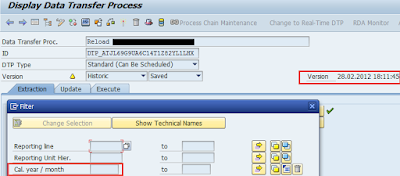ABAP programmers sometime
need to authenticate a user during the runtime of some ABAP application. As an example
of this need; one can say that if user is supposed to confirm some data in ABAP
application a system shall ask for user’s password and once it is correct it really
does the confirmation. Assumption here is that once user is entering the
password he or she must be really aware that a particular activity (e.g.
confirming a batch in manufacturing process) is untended to be done.
So being as the ABAP
programmer how would I validate the user password? Luckily SAP is providing a
very handy function module to do that. The name of the FM is SUSR_LOGIN_CHECK_RFC. It has very
simple interface of importing parameters and by evaluating exceptions I can
suite my application with regards either validation passed, user is locked, password
is wrong etc.
REPORT ZMM_PWD_CHECK. PARAMETERS: p_usr TYPE sy-uname, p_pwd TYPE rsyst-bcode. CALL FUNCTION 'SUSR_LOGIN_CHECK_RFC' EXPORTING bname = sy-uname password = p_pwd EXCEPTIONS wait = 1 user_locked = 2 user_not_active = 3 password_expired = 4 wrong_password = 5 no_check_for_this_user = 6 internal_error = 7. WRITE: sy-subrc. CASE sy-subrc. WHEN 0. WRITE: 'everything OK'. WHEN 1. WRITE: 'wait'. WHEN 2. WRITE: 'user_locked '. WHEN 3. WRITE: 'user_not_active'. WHEN 4. WRITE: 'password_expired'. WHEN 5. WRITE: 'wrong_password '. WHEN 6. WRITE: 'no_check_for_this_user'. WHEN 7. WRITE: 'internal_error'. WHEN OTHERS. ENDCASE.
Source code available at: github.com/softy12/ABAP-PWD-CHECK



